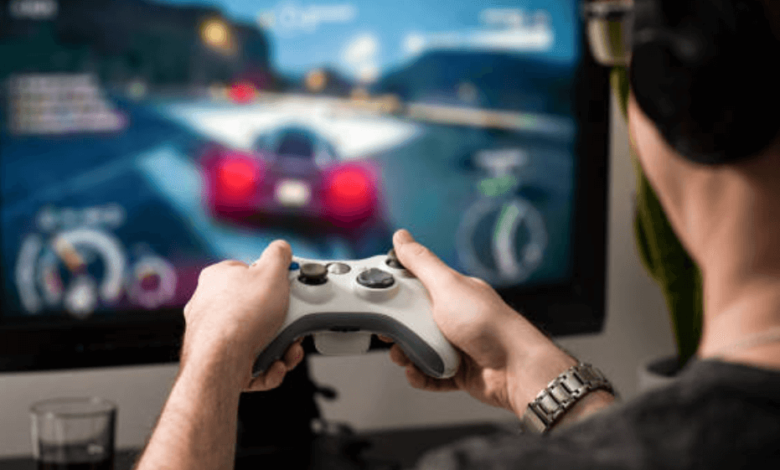From Broken to Boss: Why Every Gamer Needs a Pre-Game Diagnostic Routine for Their Controller

In competitive gaming, the distance between victory and defeat is often measured in milliseconds and micro-inputs. We meticulously optimize our monitors, internet speed, and graphic settings, yet many elite gamers overlook the most critical component of their setup: the game controller. Over time, daily use introduces subtle, insidious defects—phantom inputs, reduced axis range, and the slow creep of stick drift—that directly translate into missed shots, faulty movement, and ultimately, preventable losses. A quick “plug and play” mentality is a recipe for controller failure. This guide introduces the definitive Pre-Game Diagnostic Routine, transforming a quick check into a powerful performance ritual using a dedicated game controller tester to ensure your hardware is always performing at a boss-level standard.
I. The Hidden Cost of Input Degradation
Minor defects in a game tester controller don’t always result in immediate, catastrophic failure; often, they introduce slight inconsistencies that sabotage high-level play.
A. Losing the Micro-Adjustment Edge
In games requiring precision, such as competitive shooters or simulators, accuracy is found in the smallest movements. A controller with slight internal wear might fail to register input below a certain threshold or introduce unnecessary jitter. This loss of fidelity means you lose the crucial ability to make tiny, smooth micro-adjustments to your aim, forcing you to rely on less stable stick movements. Without a routine game controller test, this degradation goes unnoticed until your aiming feels inexplicably “off.”
B. The Deceptive Mask of Dead Zones
Your console or PC’s operating system (OS) applies a built-in dead zone to cover minor errors, but this is a diagnostic failure. This dead zone essentially ignores the small, faulty inputs caused by early stick drift. While the screen stays still, your stick might be transmitting a constant value of 0.02. When you finally start to move the stick, the game doesn’t register movement until that drift value is surpassed, creating a slight, irritating lag. The only way to bypass this mask is by using an external controller tester to view the raw data.
See also: Strengthening Digital Growth with Advanced Marketing Techniques
II. The Three Pillars of the Pre-Game Routine
A perfect diagnostic routine is built on three quick, actionable pillars that should be performed before any serious gaming session.
Pillar 1: The Physical Readiness Check (2 Minutes)
A quick physical scan handles the majority of input issues caused by external debris or connection failures.
- Cable and Port Inspection: If wired, ensure the USB cable is securely seated and free of kinks or damage. Check the controller’s port for dust or lint. A faulty connection is the leading cause of intermittent input loss and poor controller detection.
- Tactile Cleanliness: Press every face button, bumper, and trigger. They should all return to the neutral position instantly and audibly. Buttons that stick or feel “spongy” need immediate spot-cleaning with a microfiber cloth or low-pressure compressed air.
- Rumble Check: Run a quick haptic integrity test. If one side of the controller rumbles louder or weaker than the other, the internal motor is degrading, which can affect grip and introduce micro-vibrations that destabilize your aim.
Pillar 2: The Digital Verification (The Non-Negotiable Step)
This is the core of the routine, where you use objective data to confirm the health of the internal electronics.
Actionable Advice: To objectively verify the raw, unfiltered data stream and ensure your gamepad tester is ready for peak performance, you must begin your routine by navigating to a game controller tester site. This web application reads the data via the browser’s Gamepad API, providing a real-time visualization of every single input.
Pillar 3: Firmware and Software Sync (30 Seconds)
Ensure your controller is talking to your machine using the latest, cleanest language.
- Firmware Update: Briefly check the console or PC software (e.g., Steam, Xbox Accessories) for any pending controller firmware updates. Manufacturers regularly release stability patches that refine sensor reading and communication, correcting minor issues before they become full-blown controller failure.
- Re-Sync (Wireless): If playing wirelessly, quickly disconnect and reconnect the Bluetooth or 2.4 GHz signal. This forces a clean handshake with your PC or console, optimizing controller detection and preventing wireless lag caused by a degraded connection state.
III. Your Digital Verification Checklist with the Controller Tester
Using the gamepad tester interface, run this three-part test—it only takes 60 seconds and provides the ultimate assurance.
Test A: The Zero-Point Stick Drift Check
The goal is to verify absolute electronic neutrality, which is impossible using in-game settings.
- Rest and Observe: Place your game tester controller on a desk and let the analog sticks rest untouched for 10 seconds.
- The Gold Standard: Observe the X and Y axis values on the tester. These values must be exactly 0.000.
- The Failure Threshold: If the sticks settle at anything beyond |0.005| (e.g., 0.009 or -0.012), you have confirmed stick drift. Knowing this allows you to immediately adjust the dead zone in-game (though masking the problem, it is necessary to save your session) or swap to a backup controller.
Test B: Full Range and Polling Consistency
Verify that your input is both complete and consistently transmitted.
- Maximum Range: Push the analog sticks fully to the extreme edges (Up, Down, Left, Right). The axis value must reach 1.000 or -1.000. A restricted range (e.g., stopping at 0.97) means you are losing character movement speed.
- Polling Stability (Lag Check): Hold an analog stick at a slight, consistent angle (e.g., 45 degrees) and watch the value. It should be perfectly stable. Any sudden jitters, freezes, or disconnects indicate unstable internal electronics or connectivity, which guarantees input lag in-game.
Test C: Analog Trigger Integrity
Analog triggers are proportional inputs essential for precise acceleration and braking.
- Smooth Progression: Slowly depress the triggers (L2/R2) from rest to their maximum depth. The corresponding value on the controller tester must move smoothly and linearly from 0.000 to 1.000.
- Jumping Input: If the value “jumps” (e.g., 0.000 to 0.400, then to 1.000), the internal sensor has failed. This will ruin racing or stealth games where partial input is necessary. This test game controller process prevents competitive handicaps from faulty components.




